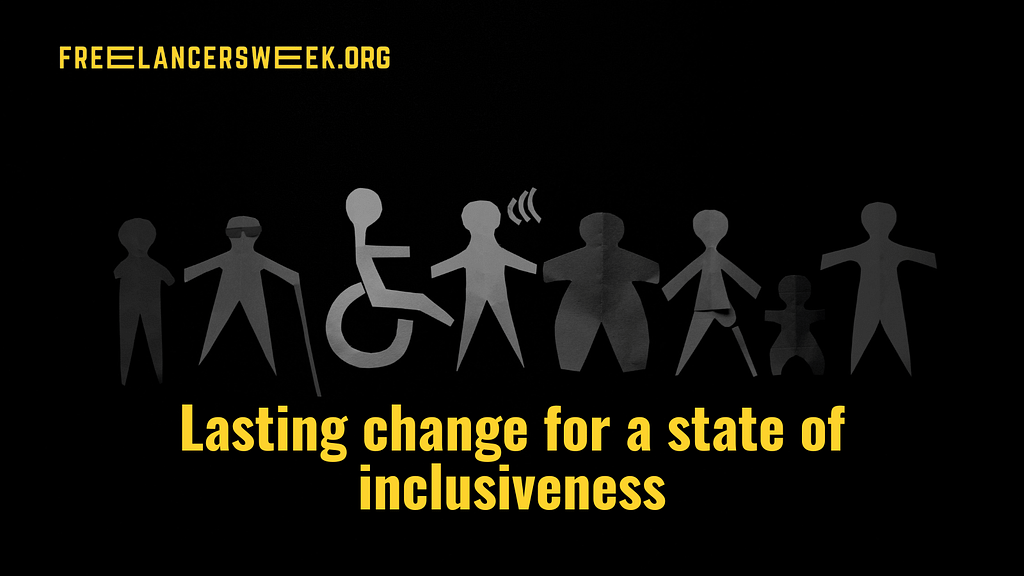Author: SafetyWing
A fully nomadic lifestyle…it’s the dream. From workdays planned around surf swells to champagne powder ski destinations, being a digital nomad has plenty of perks, but it isn’t always sustainable. The hustle for how to get clients is a constant struggle as you’ll need to stand out amongst workers who agree to work with office walls and find remote clients that don’t mind you being fully nomadic.
Attitudes towards remote work have shifted in recent years, with the number of global job listings nearly tripling since before the pandemic, according to Indeed. Employers are becoming more open to remote work but when you compare the demand for remote work jobs with the supply of employers, the numbers don’t line up. More people are seeking remote work, but almost half of companies are still not allowing it, with some preferring a hybrid work situation. This means if you want to be a freelance nomad, you’ll need to stand out to reap the rewards.
The attractiveness of the digital nomad lifestyle is the freedom and flexibility of the lifestyle, with more than half of digital nomads choosing their love of travel as the reason why they became a digital nomad in the first place. Almost three-quarters of nomads visit one to two countries a year which shows how digital nomads are spending more time abroad. SafetyWing, a company offering travel medical and health insurance, services alone 100,000 remote workers across more than 185 countries and this number continues to climb.
Finding clients who accept full remote work and not being a close geographical access to you is one of the biggest challenges to the nomadic lifestyle. There are 35 million digital nomads in the world and 61% of self-employed digital nomads identify as freelancers. Competition is getting heated for a group that hasn’t reached an equivalent in demand yet but with the right mindset and some smart guidelines for finding freelance jobs online, you can be exploring Barcelona’s café culture or be working by the ocean just like you pictured.
Know Your Ideal Client
It’s important to think about what type of client you want to have to match your career goals:
- How many projects or hours are you looking to take on
- What type of deadlines do you want to work with?
- Do you want your clients to be in the same time zone? Working across different time zones can impact how you structure your work schedule.
Once you’ve narrowed this down, think about where your ideal clients are networking online:
- Are they likely to be more proactive or reactive when it comes to finding new talent?
- Will they stumble across you because you’ve created content that is relevant to them or are they seeking talent across job boards or their websites?
Companies who don’t have the resources to find new talent might post on their LinkedIn feed or Twitter accounts asking for referrals, while others may not be proactively looking to hire freelancers – they might land on a webpage detailing a set of skills or strategies that will solve a problem they are currently having (or didn’t even know they had).
Identify Your Main Lead Channel
An understanding of where your ideal clients are spending time will help you focus on a particular platform so you don’t feel stretched across multiple channels. Once you’ve identified your main channel, be consistent and explore the best ways to engage with its users. If you’re looking to attract new clients and you know they are active on LinkedIn, implement a content strategy for new leads, or brainstorm some creative job proposals for freelancing sites. Some engagement strategies include:
Experts believe around one to six posts a day on Linkedin will help expand your network. There is no magic number, but what all experts agree on is ensuring that you are posting quality over quantity and creating valuable content for your community. You want to position yourself as a thought leader in your industry where clients can rely on you as an important resource. Even if you post only once a month, LinkedIn found that you gain followers six times faster than if you didn’t post at all.
LinkedIn has multiple features to leverage that will grow your network. LinkedIn Pulse is an internal blog that allows you to dive deeper into your content and post up to 2,000 words with keywords and hashtags that will reach your ideal client feeds. Since LinkedIn articles don’t perform as strongly when they are too promotional, you can encourage your readers to sign up to your LinkedIn e-newsletter where you can insert a call to action or create a promotional email to convert your network..
Remember, it’s better to put the time into creating a post that is thoughtful and helpful for your readers than it is to just post invaluable content for the sake of it. You should also schedule content in advance, so you’re not a slave to thinking up what to post every day.
• Online Freelancing Sites
If you choose to focus more on job boards and online freelancing sites such as WeWork Remotely, Flex Jobs or Remote OK, set up notifications so you can be reactive as quickly as possible. You will have the best chances of getting noticed straight after the prospective client has posted their job. Clients usually have their shortlist after reading the first ten proposals, so aim to be among the first ten to be a front-runner.
Stand Out In A Sea Of Sameness
It’s imperative you stand out from the competition when creating a proposal for freelance jobs online. Too often, people highlight their skill set with no relevance to the job they are applying for. Demonstrate an understanding of the client’s problem or situation and highlight how your experience will show them exactly how you will get the job done. Show that you have read their brief by addressing their needs and how you will add value to their business.
When engaging with prospective clients, don’t send them blanket proposals that look like they have been copied and pasted. Get personal, even the smallest details can go a long way and make you stand out from other applicants. A simple detail such as finding the name of the person posting the job when not listed (hint: look at past reviews of the client from other freelancers) can go a long way and make you stand out from other applicants.
To really wow prospective clients and shine a spotlight on what you do, include testimonials and your past work in a portfolio. This is an investment in your own personal brand, and you should be continuously updating it so it’s relevant and showcasing your best work. If you’re applying for freelance jobs online for beginners but don’t have a portfolio to share yet, consider a creative way to highlight your skills, whether it be mocking up a practice project or creating a blog to showcase your thinking.
Finding remote clients to be fully nomadic can be a challenge, but also very exhilarating. Once you’ve found your rhythm and the strategy that works for you, it will soon feel like clockwork and something that you’ve always done naturally. Think outside the box but stay authentic to who you are, and you’ll have an abundance of freelance jobs lining up in your inbox.





